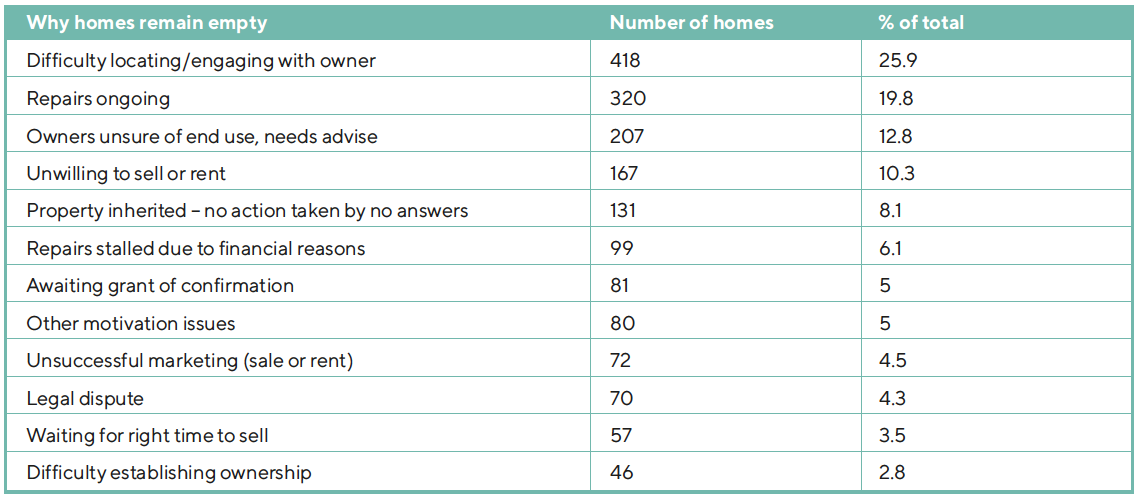Why homes become and remain empty
As part of our annual survey, we gather information from EHOs on why homes became empty and why they remain empty. EHOs provide this in relation to their active caseload where known.
2021/22 saw a change in the breakdown of reasons for homes becoming empty, as death of the previous owner ceased to be the most common reason mentioned in our survey.
In 2020/21 this was cited in almost 30% of cases, with three further reasons (property brought with intention of renovating/owner moved to alternative accommodation prior to selling/rental property tenancy ended) accounting for between 18% and 20% each.
In 2021/22, the reasons were more evenly split:
• Owner moved to alternative accommodation without/prior to selling: 24.89%
• Rental property tenancy ended: 23.13%
• Death of the previous owner: 22.98%
• Property brought with intention of renovating: 17.40%
This may to some extent be linked to the pandemic, with the increase in people moving without selling, or rental tenancies ending being a result of the lifting of restrictions on moves that affected many people during 2020/21. The fall in people buying properties to renovate may also reflect people being reluctant to take on renovation projects with the rising cost of materials.

The two main reasons for homes remaining empty were difficulty locating or engaging with owners (25.85%) and repairs ongoing (19.79%).
In 2020/21 difficulty locating or engaging owners was cited in almost 21% of cases, while difficulty establishing ownership was cited in a further 10.61% of cases. The latter category accounted for only 2.84% of cases this year. This may reflect the increased use of genealogy services to establish next of kin in cases where owners are deceased. However, the rise in cases where owners cannot be located or will not engage indicates that knowing who should own the property will not in itself bring the property back to use.
Added to this, the proportion of homes remaining empty where a property has been inherited but no action has been taken by the owner or where a grant of confirmation is yet to be issued, together account for more than 13% of active cases. The extent to which owners or next of kin are interested in taking active steps to return the property to use is unknown.
Some owners of inherited properties may want to return the property to use but be unaware of options for doing this or unable to afford repairs and renovations needed. Others may have no interest and simply see the property as an inconvenience that they are happy to ignore and see as someone else’s problem.
While the percentage of cases with repairs ongoing increased from 16.12% last year, cases where repairs had stalled due to financial reasons fell to 6.12% this year (from 16.12% in 2020/21). This is encouraging to see and perhaps indicates how exercising discretion on applying the council tax levy, where home owners are working to bring a property back to use, can help owners by freeing up money to complete repairs.

